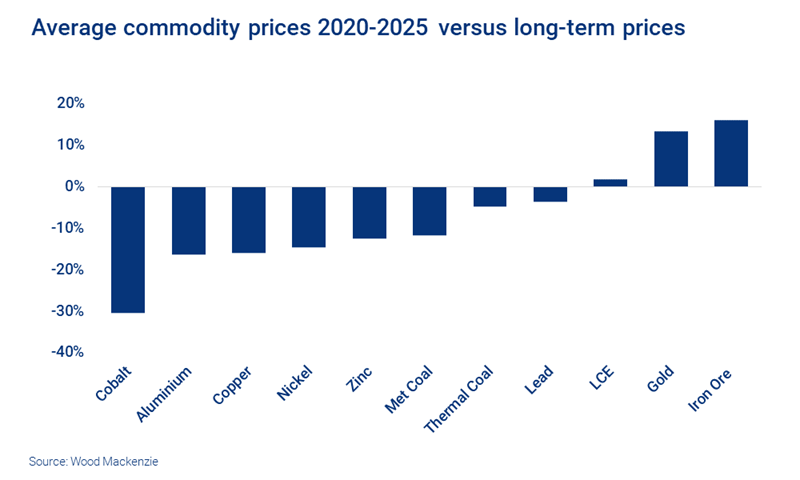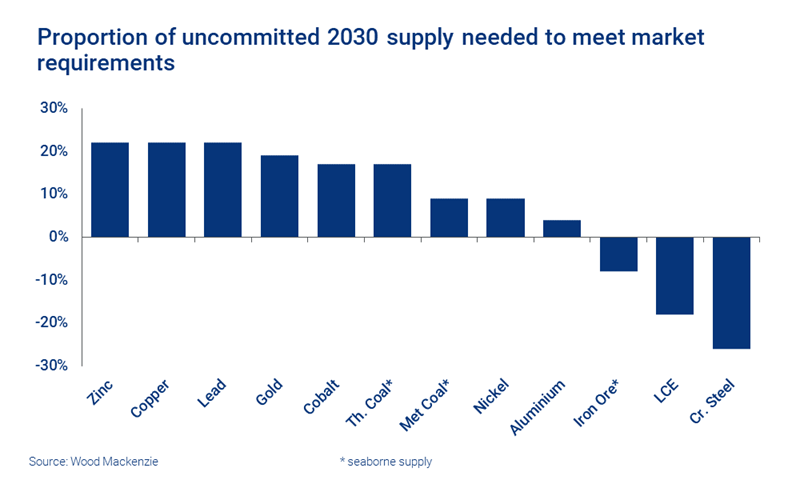Get this complimentary article series in your inbox
1 minute read
Julian Kettle
Senior Vice President, Vice Chair Metals and Mining

Julian Kettle
Senior Vice President, Vice Chair Metals and Mining
Latest articles by Julian
-
Opinion
Metals investment: the darkest hour is just before the dawn
-
Opinion
Ebook | How can the Super Region enable the energy transition?
-
The Edge
Can battery innovation accelerate the energy transition?
-
Featured
Have miners missed the boat to invest and get ahead of the energy transition?
-
Featured
Why the energy transition will be powered by metals
-
Featured
Could Big Energy and miners join forces to deliver a faster transition?
Speculation abounds about the prospect of a new mining super-cycle. We may not be quite there yet – but it won’t be long before some markets become structurally undersupplied, particularly if the energy transition accelerates.
In part one of this series I explored the prospect of a mining super-cycle. Now I want to delve a little deeper into how such an event could play out, and how the sector must balance the challenges of short-cycle demand and long-cycle supply development. And, if a super-cycle is indeed ahead, how long will it last?
A different kind of super-cycle
The last mining super-cycle, which started in 2001, was almost entirely driven by China. This time around it will be a global theme rather than a specific country or region that delivers transformational demand.
While China will be a significant factor, given its scale, the real driver will be the energy transition – particularly if the world accelerates onto a two degree pathway. No fewer than 189 countries have committed to zero carbon, but the shape and speed of decarbonisation will be markedly different for individual sectors, and indeed countries.
And while the genesis of the super-cycle will undoubtedly be in the associated transformational demand, it will be limitations of supply that make a super-cycle inevitable.
Why some commodities are more equal than others
As the great George Orwell might have put it: all commodities are equal, but some commodities are more equal than others. All metals and minerals will see growth over the next decade. However, there will be significant variation, with some eventually flat-lining while others experience rapidly accelerating demand.
As decarbonisation accelerates so will the drop-off in demand growth for commodities linked to high-carbon activities, such as thermal coal. On the other hand, metals critical to the energy transition will experience spectacular growth – lithium and cobalt being obvious examples.
The period beyond 2030 will see the most divergence. So, with typical lead times in the five-to-ten year range for project development, producers have (some) time on their side as they tackle the challenge of the energy transition.
The need for investment to bolster long-term supply
With three notable exceptions (lithium, steel and iron ore) all commodities will require additional investment this decade, over and above current commitments. The reason for this is that at the mine level, grade decline and depletions will mean supply needs to be replenished even if there is zero growth in demand. It’s a looming supply gap.
And while a ten-year-plus time horizon provides some breathing space, questions remain about producers’ willingness and ability to mobilise enough finance now to ensure availability of supply later. Investor desire for dividend distribution tends to come at the expense of investment in growth with returns perhaps five to seven years in the future. There is an expectation of sub-incentive price levels for the next five years, prompted by markets trending to oversupply. This may prompt investors and boards to sit on their hands, not wishing to place bets when the outcome is far from sure.
This reticence will exacerbate the shortfall in the period five to ten years from now.
The importance of supply elasticity
If supply gaps create a mining super-cycle, its duration will be determined by the elasticity of supply. If supply can catch up with demand, then the period when prices are significantly above incentive levels will be short – if not then its duration will be extended.
I would contend that supply elasticity will be stretched to breaking point in the medium term for some commodities, even assuming a three degree world pathway (our base case). Yet this will not be the case for others – as noted above, the super-cycle will be bifurcated rather than uniform.
How will the super-cycle end?
If it happens, and I have little doubt that it will, the super-cycle will eventually be brought to an end by several factors. The high price environment will incentivise the development of sufficient supply, with prices concomitantly returning to marginal production costs. At the same time policy, carbon intensity and economic rationale to drive greater scrap collection and use, together with substitution, thrifting and other forms of demand destruction. Together these factors will all mitigate and spell the end of the super-cycle.
The key question is how long that will take? History is our only real guide to the future. On the basis that history has a tendency to repeat itself, I would argue that the energy transition super-cycle will be a minimum of a decade in duration. Perhaps longer, given that the last super-cycle arguably lasted for 13 years. This represents the likely upper limit, as it would provide sufficient time for the supply side of the sector to put in place sustainable capacity growth to meet requirements.
Slow and steady wins the race (but not too slow!)
Given the pace at which technology is changing, the winners in this super-cycle may not be those that place their bets earliest. In this respect the adage about the tortoise and the hare is apt: slow and steady wins the race.
There is a risk, however, that supply development is too slow and too steady with not enough capital being deployed soon enough. It is apparent that the industry needs to start to tilt towards investing in growth soon. Otherwise, the sunlit uplands of transformational energy transition demand will be illusory, as consumers will not commit to commodities if supply cannot be guaranteed.
Get unique insights on metals and mining in your inbox
This article is part of a regular complimentary series exploring opportunities and challenges in the world of metals and mining. Fill in the form at the top of the page to make sure you hear about new articles in the series as they are published.









